Cookbook of Japan: Gyoza
Updated March 12, 2025
Japan has a deep and enduring love for food, and its cuisine is cherished worldwide for its variety, flavors, and unique culinary traditions. Among the many beloved Japanese dishes, one stands out as a perfect companion to ramen or a delightful meal on its own—gyoza!
The Popularity of Gyoza in Japan
Gyoza is a staple dish in Japan, recognized by almost everyone and enjoyed in various settings, from ramen shops to izakayas (Japanese pubs). These Japanese-style potstickers are traditionally made with a pork-based filling mixed with garlic chives, finely minced cabbage, and sometimes shiitake mushrooms, all encased in a thin wonton wrapper. The dumplings are typically served with a dipping sauce made of soy sauce and rice vinegar, often with a drizzle of spicy chili oil called ra-yu.
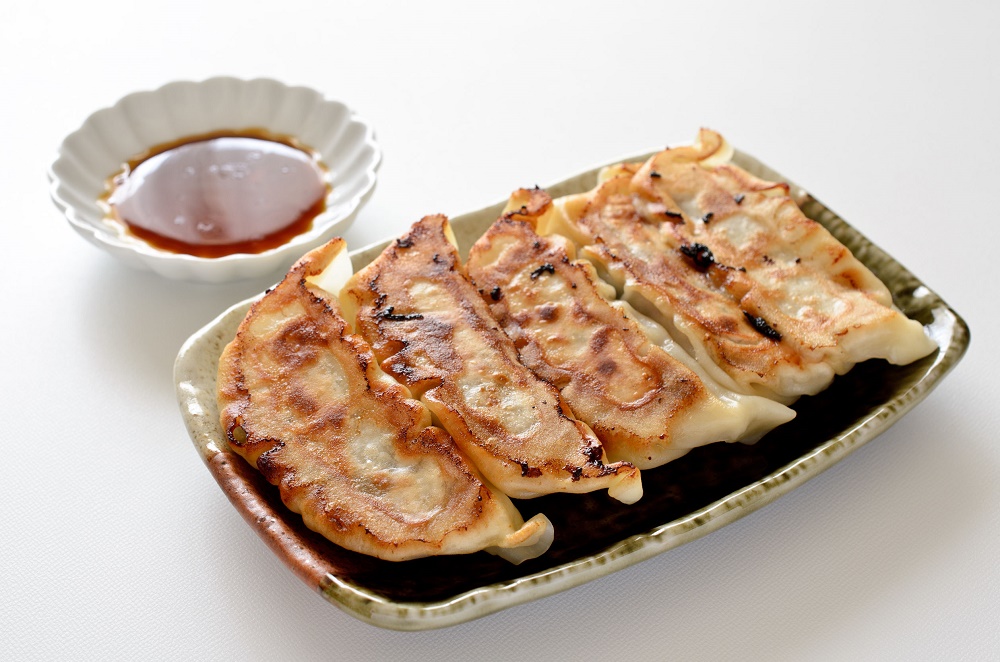
The Origins of Gyoza
Gyoza traces its roots to the Chinese dish jiaozi. While the appearance and ingredients are similar, Japanese gyoza has subtle differences in wrapping style, filling, and preparation. The thinner wrapper, distinct seasoning, and unique cooking techniques set it apart, making it an entirely unique dish while still honoring its Chinese origins.
Types of Gyoza in Japan
There are three main types of gyoza in Japan:
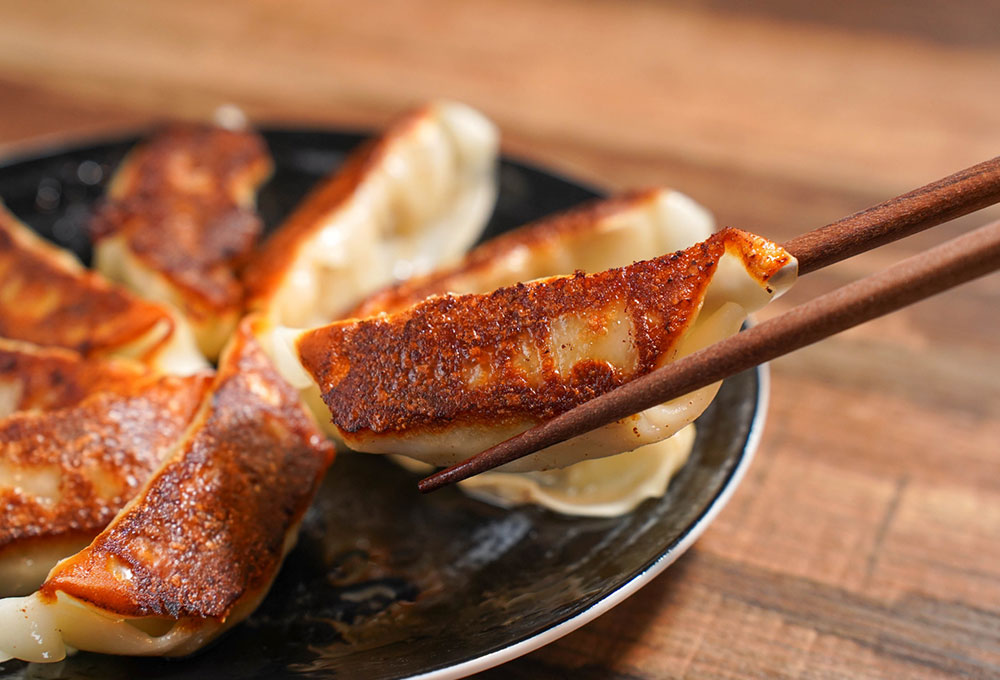 |
1. Yaki Gyoza (Pan-Fried Gyoza): The most popular variety, yaki gyoza is first steamed in a pan with a small amount of water and then fried until the outer layer turns crispy.
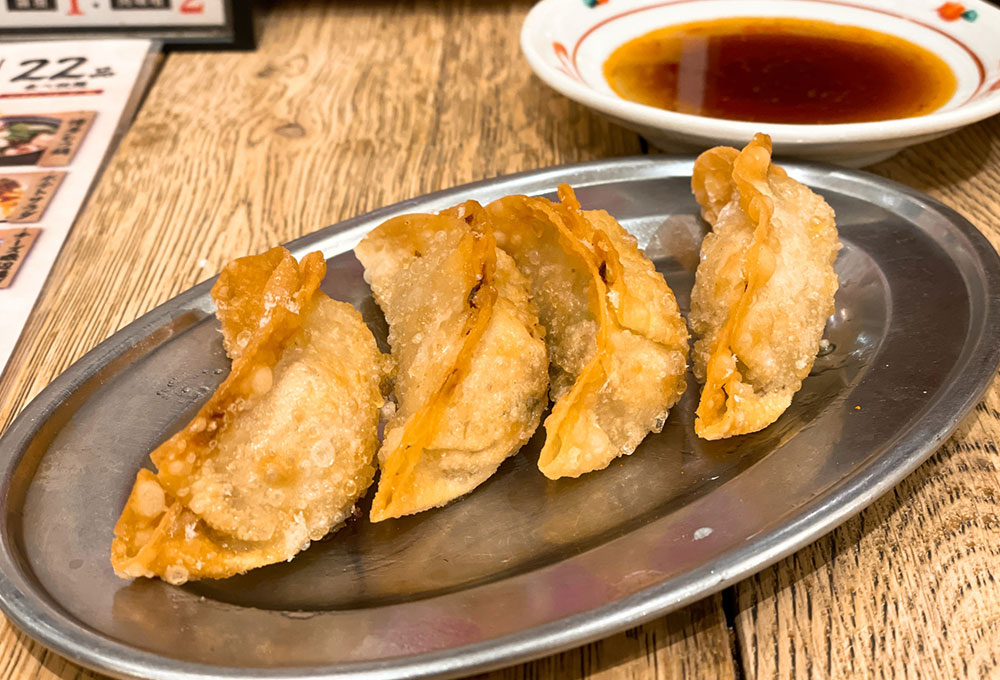 |
2. Age Gyoza (Deep-Fried Gyoza): These dumplings are fully deep-fried, giving them a crunchy texture and richer flavor.
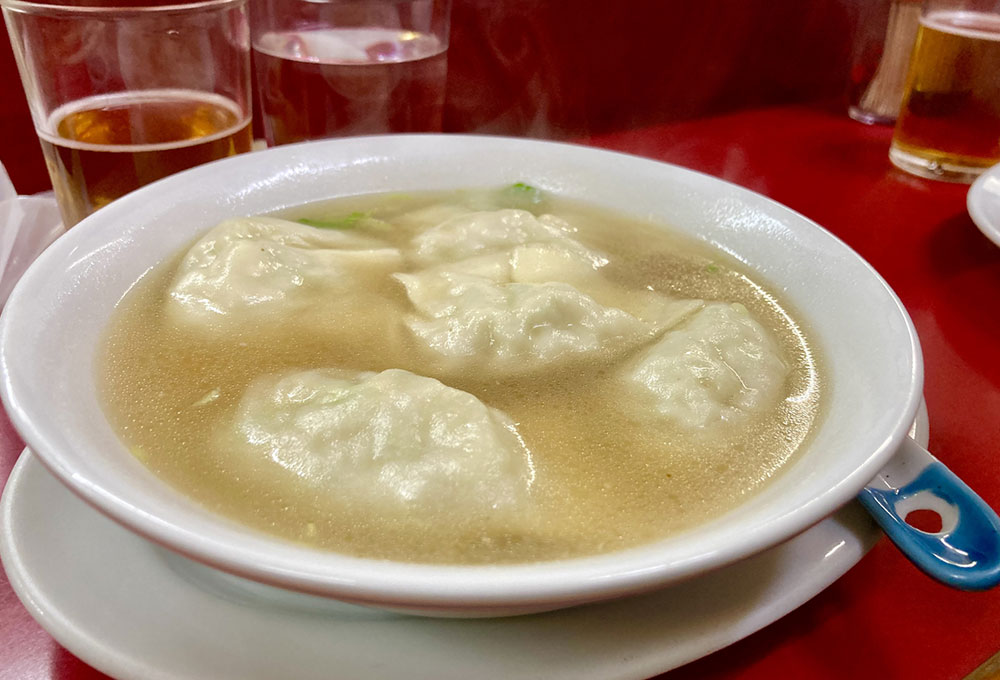 |
3. Sui Gyoza (Boiled Gyoza): This variety is boiled rather than fried, resulting in a soft and delicate texture similar to wonton dumplings.
While the classic gyoza filling consists of pork and vegetables, variations with shrimp or all-vegetable fillings are also popular. Making gyoza at home is a rewarding experience, though slightly time-consuming.
Here’s a traditional recipe for you to try!
Gyoza Recipe
*** 1. Finely chop cabbage. Massage cabbage with 1 tsp of salt and let sit for 10 minutes. Squeeze out excess water. 2. Finely chop your shitake and chives, and grate your ginger and garlic. 3. In a bowl, combine your ground pork, cabbage, chives, and mushrooms into a large bowl. Add in the grated ginger and garlic. 4. Once combined, knead (use gloves) in the remainder of your salt, the soy sauce, and sesame oil into the mixture. The mixture should turn a light brown pink with the colors of vegetables peeking through.  5. Prepare your gyoza wrappers. Place your bit of water nearby. 6. Take one wrapper and place about a teaspoon of the mixture into the center of the wrapper. 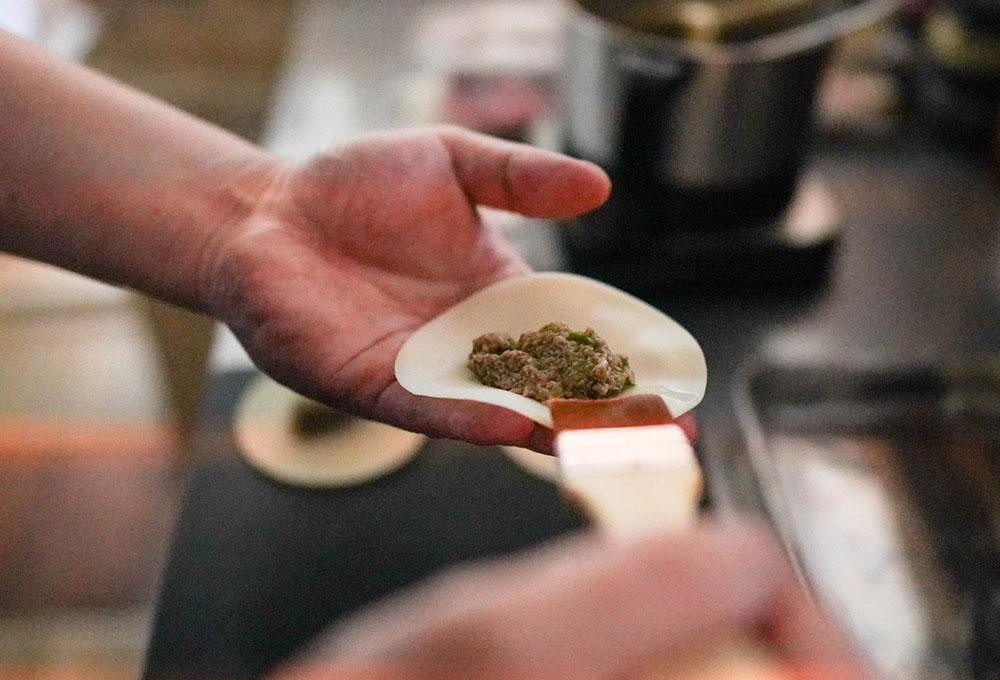 7. Put a small bit of water around the rim of your wrapper. Be careful not to put too much as it will fall apart during the cooking process. Put too little and it may not stick at all. 8. Slowly bring one side of the gyoza wrapper to the other side taking care not to drop the filling. Pinch and pleat the sides together so it forms a folded over pattern as you pinch close. 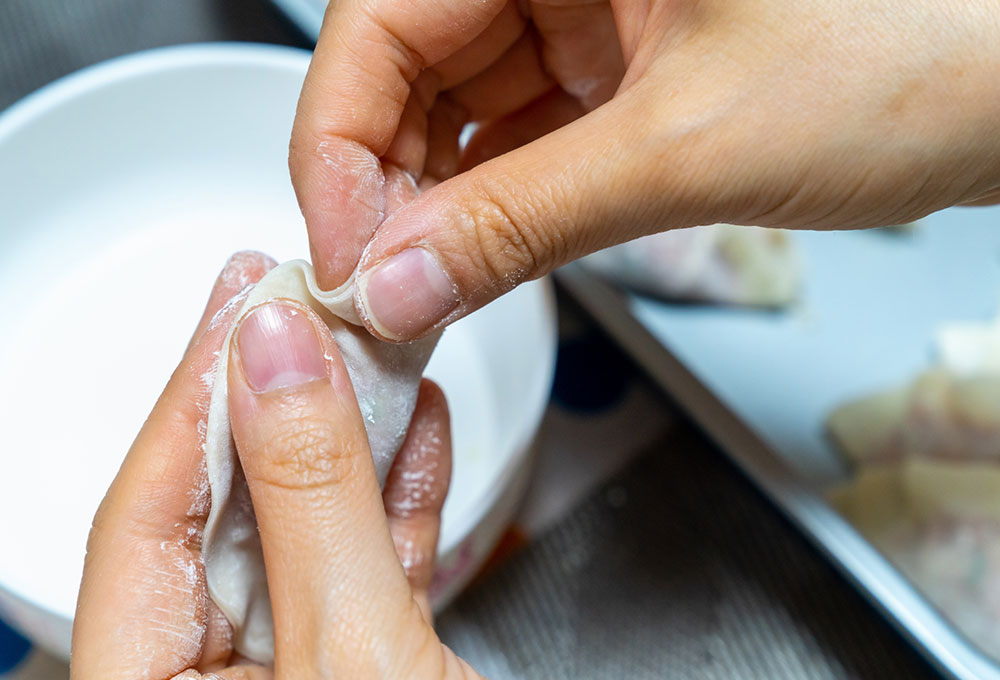 9. Repeat until all the filling is used up. * To Cook (Yaki gyoza style) 1. Add oil of your choice to a large frying pan over medium high heat. Non-stick is preferable. 2. Add the gyoza putting the flat side down on the pan. Brown the bottoms of the gyoza. (Approx 3-4 minutes) 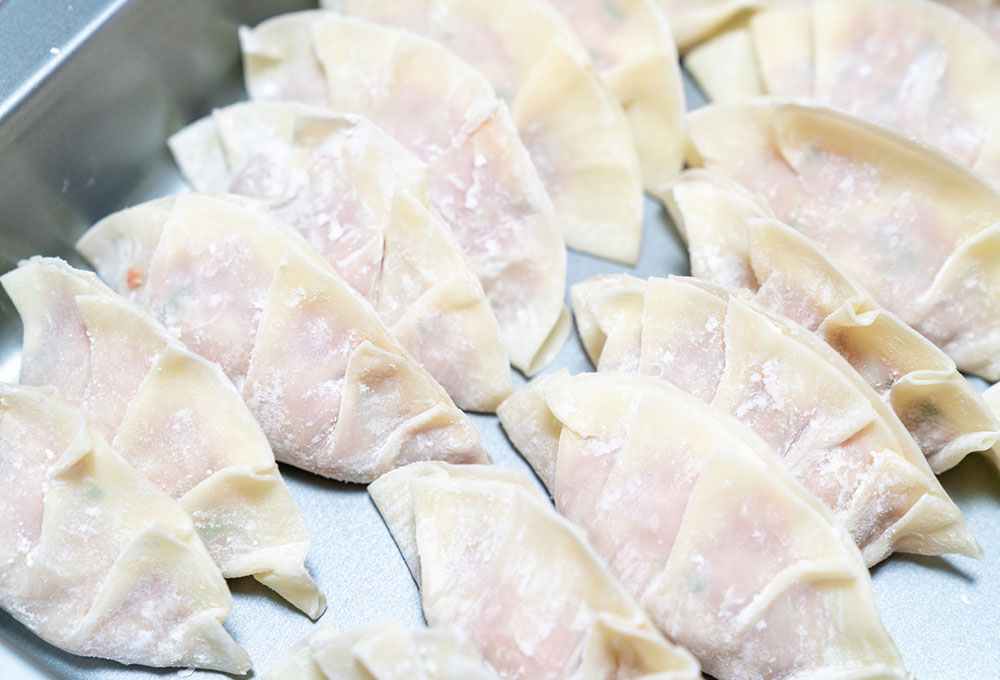 3. Add 1/3 cup of water into the pan. Cover with a lid and let steam until most of the water is gone. 4. Continue frying until all the water is gone. If you would like, you can add a bit of sesame oil and re-fry the gyoza so that it is nice and crispy with a nice sesame aroma. 5. Transfer to a plate and serve with a dipping sauce of your choice. Traditionally in Japanese cuisine, it is eaten with soy sauce and vinegar mixture with some ra-yu chili oil added for taste. Enjoy on its own as a meal or as a side dish!  You can also freeze your gyoza in a resealable bag or container for up to about a month! *Disclaimer: This is not a professional recipe created by a trained chef. H.I.S. in no way provides any warranty, expressed or implied, towards the content of recipes on this website. It is the reader’s responsibility to determine the value and quality of any recipe or instructions provided, and to determine the nutritional value (if any) and safety of the preparation instructions. |
Other Cookbook of Japan Posts:
Dorayaki
Miso Soup
***
Enjoy Japanese food? Check out these half-day food tours in Japan! Priced at a great value and not totally time-consuming, you still get to enjoy some of the flavors of Japan and connect with friendly like-minded travelers and see the cities of Japan along the way!
Check our cooking tours here!
Save this recipe for later!
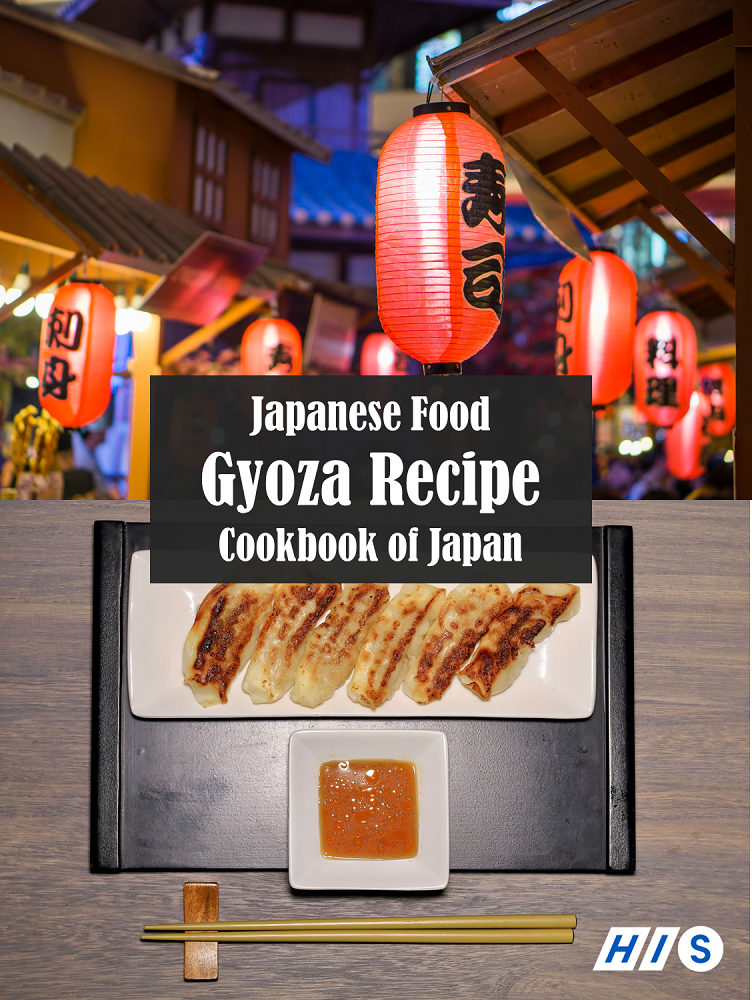 |

